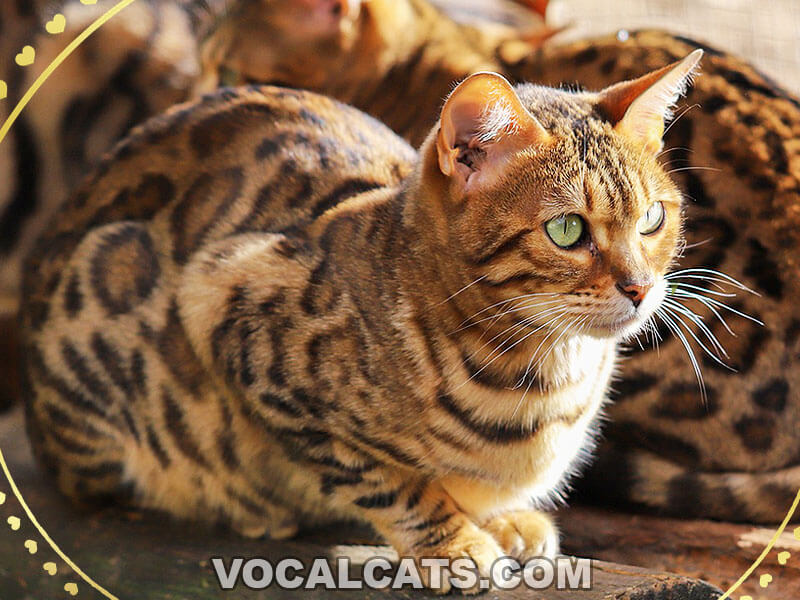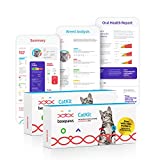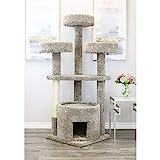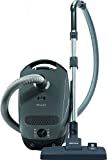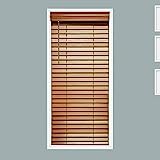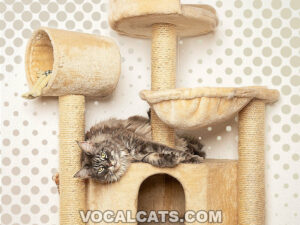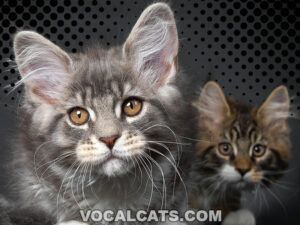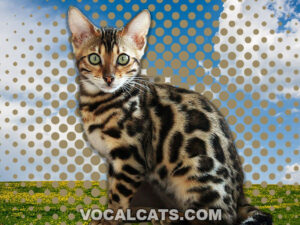If there’s a beauty contest for cats, the Bengal Tabby cat will surely stand out among the candidates. With its bold and leopard-looking coat, one may think that a Bengal Tabby cat just jumped out straight from the jungle.
But, wait, there’s something more unique about this mixed breed and that is, its love affair with water. Bengal cats are descendants of Asian leopards that live near the water. Thus, it’s not surprising that some Bengal Tabby cats also enjoy water play, and yes, swimming, as well.
Interestingly, Bengal cats are mixed with other purebreds and one of those is the Savannah cat to produce Savannah Bengal Cat Mix. But for now, let’s focus our attention on what it’s like to own a Bengal Tabby cat. Is this cat hyperactive and good with kids? Is training and grooming him a big task? Keep reading to learn more about this elegant cat breed.
Contents
- Bengal Tabby Cat: Breed Overview
- What is a Bengal Cat?
- What is a Bengal Tabby Cat?
- Can a Bengal look like a Tabby?
- Bengal Cat Tabby parent breeds
- Bengal Tabby Cat history
- Bengal vs Tabby
- Bengal Cat markings vs Tabby
- Tabby markings vs Bengal
- Is the Tabby Cat Bengal recognized by cat registries?
- Are Bengal Tabby Cats rare?
- Bengal Tabby physical appearance
- Bengal Cat vs Tabby size
- Tabby Bengal size, height, and weight
- Various Tabby and Bengal Cat coat colors and types
- Bengal Tabby Cat personality and temperament
- Do Bengal Tabby Cats make great family pets?
- Tabby Bengal Cat training
- Bengal Cat Tabby exercise requirement
- Tabby Cat Bengal grooming and cleaning
- Do Bengal Tabby Cats shed?
- Are Bengal Tabby Cats hypoallergenic?
- Bengal Tabby food and diet
- Bengal Tabby Cat common health issues
- Bengal Tabby Cat lifespan
- Bengal Cat Tabby breeders
- Tabby Bengal kitten
- How much does a Bengal Tabby Cat cost?
- Bengal Tabby Cat price
- Places to find Bengal Tabby kittens for sale
- Finding a healthy Bengal Tabby Cat for sale
- Bengal Tabby Cat: Pros and Cons
- Is the Bengal Cat Tabby right for me?
Bengal Tabby Cat: Breed Overview
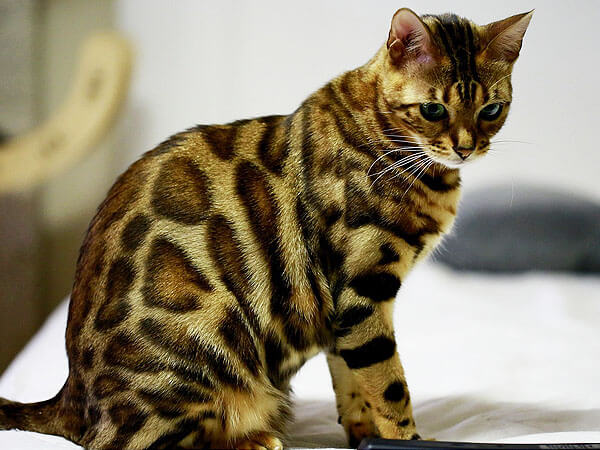
| Other names | Bengal Tabby Mix |
| Size | Medium – Large |
| Weight | 8 – 18 pounds |
| Height | 10 – 16 inches |
| Coat Colors | Black, Brown, Silver, Blue |
| Child Friendliness | Moderate |
| Feline Friendliness | Moderate |
| Training Difficulty | Moderate |
| Grooming Upkeep | Moderate |
| Exercise Needs | Moderate – High |
| Health | Moderate |
| Lifespan | 10 – 15 years |
| Kitten Cost | $500 – $1,500 |
What is a Bengal Cat?
The Bengal Cat is one of the most unique-looking domesticated cats in the world because of their wild ancestry. So, What is a Bengal Cat?
The Bengal Cat is a breed that was developed by crossing the Asian Leopard Cat with a short-haired domesticated cat, such as the Egyptian Mau, Abyssinian, or American Shorthair.
RECOMMENDED: Ragdoll Tabby Mix (Complete Guide)
What is a Bengal Tabby Cat?
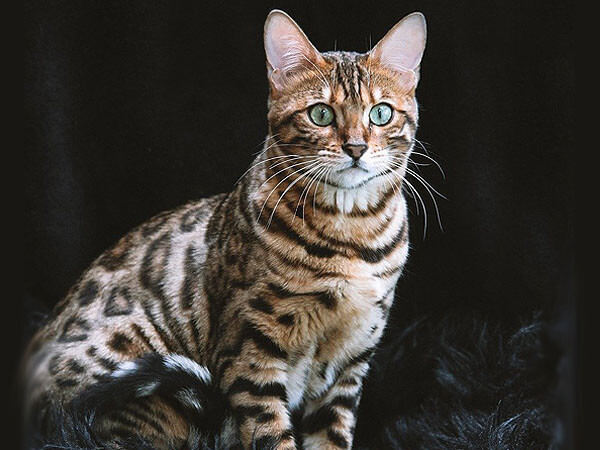
A Bengal Tabby Cat is a cross between the Bengal cat and a Tabby cat of no particular breed. They exhibit a beautiful rosette or marbled coat pattern similar to their Bengal parents but are less active and more docile.
RELATED: Maine Coon Tabby Mix (Complete Guide)
Can a Bengal look like a Tabby?
In essence, all Bengal Cats are Tabby because of the swirling patterns on their coat. They also have the distinctive ‘M’ pencil mark on their forehead although it may be hard to notice on some Bengals.
Bengal Cat Tabby parent breeds
The Bengal Cat Tabby would have physical and temperamental traits that are a mixture of both parent breeds. Possibly one of the reasons why they are mixed is to somehow lessen the “wild” or feral personality of the Bengal.
The Bengal cat is prized for its eye-catching rosettes or marbled coat that resembles the leopard cats in the wild. Its feral nature has been bred out for several generations resulting in a more domesticated personality that still shows some activeness and intelligence.
Tabbies belong to no particular breed. It can be any domesticated cat that has a characteristic striped or banded pattern on its coat. Their temperament varies from different breed, but generally, they are considered by many as friendly, affectionate, and curious.
CHECK OUT: Bengal Siamese Mix (Complete Guide)
Bengal Tabby Cat history
Bengal Tabby Cats are a fairly new mixed breed being in existence only since the end of the 20th century. The Bengal Cat itself was first successfully developed in 1963 by Jean Mill in California.
She crossed a female wild Asian leopard Cat with a black domesticated shorthair. After years of trial and error, the breed was officially recognized in 1983 by The International Cat Association.
Bengal vs Tabby
The main difference between Bengal and Tabby is that Bengal is a cat breed while Tabby refers to a type of coat pattern.
Another difference is that the coat texture of a Bengal cat feels different from a regular tabby cat or any cat for that matter.
Bengals have very short, pelt-like fur that has a sheen when exposed to sunlight.
RECOMMENDED: Bengal Tabby Mix (Complete Guide)
Bengal Cat markings vs Tabby
Bengal Cat markings can be rosettes or marbled. Rosette spots can be of any shape with a sharp, dark outline and a lighter center.
Marbled markings in Bengals, on the other hand, differ from a classic tabby pattern wherein the pattern has a random horizontal or diagonal flow compared to the more circular pattern in tabby cats.
Tabby markings vs Bengal
Tabby markings can be classified into 4 patterns, namely, the classic, mackerel, ticked, and spotted. On the other hand, the Bengal cat can either have a marbled or rosette pattern.
DON’T MISS: Maine Coon Bengal Mix (Complete Guide)
Is the Tabby Cat Bengal recognized by cat registries?
No, the Tabby Cat Bengal is unfortunately not recognized by cat registries, such as the Cat Fanciers’ Association (CFA) or The International Cat Association (TICA), as a separate breed.
Tabby Cat Bengals do not have a standardized set of physical and temperamental traits since they are a cross between a purebred Bengal and any domesticated short-haired cat with a tabby coat.
Are Bengal Tabby Cats rare?
No, Bengal Tabby Cats are not rare. Your location and the presence of breeders will determine the availability of this breed.
Bengal Tabby physical appearance
The Bengal Tabby would have a wide range of physical traits depending on the breed of tabby cat crossed. The offspring may inherit the Bengal cat’s athletic physique and muscular legs that are slightly longer at the rear.
The coat pattern can also be a mixture of the Bengal’s rosette or marbled markings and the striped or whorled pattern of the tabby.
Bengal Cat vs Tabby size
Generally, Bengal Cats are taller than most common tabby cats averaging around 14 to 18 inches compared to the 10 to 16 inches of a tabby cat.
Weight-wise they are almost similar but some tabby cats can weigh more than a Bengal.
Tabby Bengal size, height, and weight
Tabby Bengal is a medium to large cat that can weigh as much as 18 pounds. As with most cat breeds, the males are typically more muscular and heavier than the females.
| Gender | Height | Weight |
| Male | 12 – 16 inches | 12 – 18 pounds |
| Female | 10 – 14 inches | 8 – 12 pounds |
Various Tabby and Bengal Cat coat colors and types
Tabby and Bengal Cat coat typically comes in black, brown, or silver color but it may also be in blue, seal, or red. The tabby pattern can range from stripes and whorls to the rosette or marbled markings of the Bengal.
Striped Bengal Cat
Bengal Cats with stripes would have vertical dark markings instead of rosette or marbled markings. Bengal Cat stripes may also be in combination with long, asymmetrical patterns of swirls.
The striping in a Bengal Cat with stripes is more noticeable around its legs and tail.
Marbled Tabby Bengal
A Tabby marbled Bengal Cat exhibits horizontal swirl markings of two or more colors in a random pattern. The markings in a Bengal marbled Tabby show distinct contrast in the base color and the markings.
Marbled Tabby vs Bengal
The difference between a marbled Tabby and Marbled Bengal is that a Marbled Tabby would have a bold, circular pattern along the sides that forms a distinctive bullseye shape.
A Marbled Bengal, on the one hand, would have a more random horizontal flow of swirls in an asymmetrical pattern.
Grey Tabby Bengal Cat
Bengal grey Tabby or grey Bengal Tabby Cat sports a grey or light blue base coat with some cream coloring. The rosettes or markings on a grey Tabby Bengal are dark grey.
Silver Tabby Bengal Cat
Bengal silver Tabby exhibits an almost white base coat with dark rosette or marbled markings.
Black Silver Tabby Bengal
Bengal black silver Tabby has a base color of silverish white to bluish gray with clear, contrasting black markings.
Silver spotted Tabby Bengal
Bengal silver spotted Tabby exhibits an ivory base color with grayish markings.
Bengal black silver spotted Tabby
Bengal black silver spotted Tabby has a silvery white to bluish gray base coat with a combination of rosette dark markings and striping on the body and tail.
Brown Tabby Bengal
A brown Tabby Bengal Cat exhibits a light brown base color. The black or dark brown markings on a Bengal brown Tabby contrast clearly with the base color.
Brown spotted Tabby Bengal Cat
Bengal brown Tabby spotted or a brown spotted Tabby Bengal exhibits a light brown base color with dark brown to black markings that contrast with the base color.
The markings on a Bengal brown spotted Tabby can take the form of rosettes with black edges and brown inner color, or just dark brown spots.
Orange Tabby Bengal
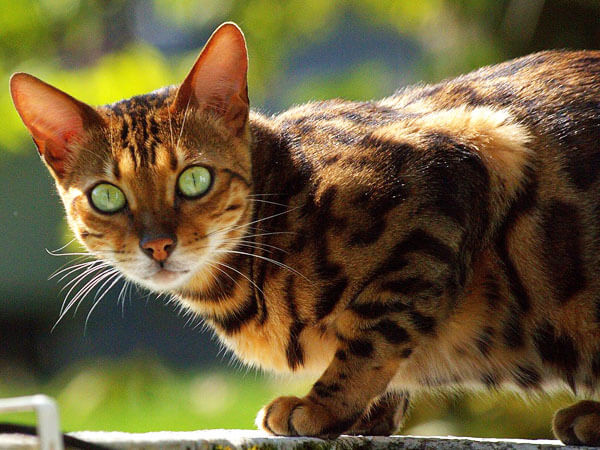
Bengal orange Tabby Cat or an orange Bengal Tabby Cat exhibits an orange-brown base coat. The rosette or marbled markings on an orange Tabby Bengal Cat ranges from light brown and reddish brown to black.
The distinctive ‘M’ pencil markings can be noticeable on the forehead and also in a Bengal orange Tabby. Bengal Cat orange Tabby may have gold or green eyes.
Bengal spotted Tabby
Spotted Tabby Bengal has random spots or rosettes on the body coat with a horizontal alignment. Striped tabby patterns are noticeable on the legs and tail, as well as, the ‘M’ pattern on the forehead.
Spotted Tabby vs Bengal
A Spotted Tabby would have random round spots on the body coat in different sizes while a Bengal would have rosette markings with a clear dark edge and a light-colored center.
Black Tabby spotted Bengal
Black spotted Tabby Bengal exhibits black markings on a black base coat. The spots can be visible in natural daylight.
Seal mink spotted Tabby Bengal
Seal mink spotted Tabby Bengal exhibits a cream to light tan base color with markings ranging in color from light brown to chocolate and dark seal.
Bengal Tabby Cat personality and temperament
You can expect your Bengal Tabby Cat to have a playful and active personality. They are very inquisitive, love to explore their environment and are known to be good climbers.
Providing them with a good cat tree or a place where they can perch would be a good idea.
They can also be quite vocal, making chirping sounds especially when they are excited.
Do Bengal Tabby Cats make great family pets?
Yes, Bengal Tabby Cats can be a great addition to an active family. This breed can be quite difficult to handle if not managed properly.
Owing to their wild ancestry, they can also have a high prey drive that might like to chase after smaller animals.
But, overall, they are affectionate and can form a good bond with kids because they are playful and active. It would also be a good idea to socialize them early on with other pets to get them used to their presence.
Tabby Bengal Cat training
You would have no problem training your Tabby Bengal Cat. They are intelligent and very trainable albeit with a bit of a stubborn side.
They can be litter trained as early as 3 weeks old. They can be taught basic house rules as long as positive reinforcement techniques are used, like giving cat treats and petting.
This mini leopard can also be leash trained to let them explore the outdoors without the risk of them escaping. The Bengal cat loves the water, so it’s not impossible for a Tabby Bengal to learn how to swim.
Bengal Cat Tabby exercise requirement
Bengal Cat Tabbies need 30 to 40 minutes of exercise per day that can be split into 2 to 3 sessions. They are most active in the morning and early evening, so take advantage of this by taking them for walks or playing interactive activities then.
DON’T MISS: Why Does My Cat Look Out The Window At Night?
It’s also a good idea to provide them with a cat tower or tree at home because jumping and leaping onto high perches are both beneficial forms of exercise.
Tabby Cat Bengal grooming and cleaning
To maintain the smoothness and shine of a Tabby Cat Bengal coat, regular grooming, and cleaning should be part of its care such as the following:
Brushing
Regular coat brushing has many benefits like removing dirt, promoting blood circulation, and preventing digestive issues associated with hairballs.
That said, we recommend that you use grooming tools like a de-shedding comb, a slicker brush, and a de-matting comb. To maintain a glossy coat, brush your cat regularly using a soft-bristled brush for cats.
Bathing
Occasional bathing is necessary to keep your cat smelling good. Use a feline-friendly shampoo that is made with organic ingredients. In between baths, grooming wipes are easy and convenient in keeping the coat smelling fresh and clean.
Teeth Brushing
Cats do suffer from periodontal diseases. But, this can be prevented with proper dental care. Apply a small amount of enzymatic toothpaste on a finger toothbrush and clean his gums and teeth with gentle and circular motions.
Nail Trimming
To cut his nails, carefully hold your Tabby Bengal cat’s paw and slowly press down his paw pads so his nails will protrude. Trim just the tip of the nails with a cat-safe nail trimmer. Be careful not to cut the quick because this will result in bleeding.
Ear/Eye Cleaning
Moistened 2 pieces of cotton balls or gauze with lukewarm water or cat cleaning eye/ear solution. Gently wipe the ear flaps and ear canal to remove earwax. Use the other moistened cotton ball/gauze and wipe off eye boogers gently.
| Grooming Needs | Grooming Frequency |
| Brushing | 2x/week |
| Bathing | Once a month or fewer |
| Teeth Brushing | 3x/week |
| Nail Trimming | 2x/month |
| Eye/Ear Care | Check weekly |
Do Bengal Tabby Cats shed?
Yes, even if the amount of shedding is very minimal, you can still see loose hair around your home.
To address this issue, clean your home using a vacuum cleaner with a HEPA filter. This machine is excellent in sucking up small particles including loose hair of cat and dander.
Are Bengal Tabby Cats hypoallergenic?
No, all cats, including a low-shedding Bengal Tabby cat produces the Fel d1 protein which is responsible for causing allergic reactions in some people. But you can keep the indoor air allergen-free by using an air purifier with a HEPA filter.
Bengal Tabby food and diet
As obligate carnivores, you should feed your Bengal Tabby with animal-based protein food. Vegetables and fruits are not recommended because their digestive systems are not designed for these food groups.
For kittens, we recommend wet/canned food because of its higher moisture content. About ½ cup served 3 times a day. For adults, the suggested amount is ¾ cup of wet/canned food mixed with dry food to be given twice a day.
Bengal Tabby Cat common health issues
A Bengal Tabby cat is predisposed to inherit the health problems of his parents such as HCM. This is the reason why a cat DNA home test kit is very useful. It can accurately identify if a cat is a carrier of any of the hereditary diseases.
While a DNA home test kit can’t replace a vet’s diagnosis, learning what’s in your cat’s genes will help you look for symptoms effectively for the following diseases:
1. Hypertrophic Cardiomyopathy (HCM)
A heart disease that causes the ventricle of the heart to thicken. It causes aortic thromboembolism and breathing problems.
2. Polycystic Kidney Disease (PKD)
Cats with this condition are born with kidney cysts that enlarge and grow. Increased urination is one of the signs.
3. Flat-Chested Kitten Syndrome (FCKS)
A condition that causes a deformity in the thorax which results in a flattened chest. The disease is commonly seen in Bengals.
4. Progressive Retinal Atrophy
This is a degenerative eye disease that affects the photoreceptor cells. It starts with night blindness eventually progressing to total blindness.
5. Hip Dysplasia
This is a disease that affects the normal growth of the ball and the socket leading to lameness and difficulty in walking.
Bengal Tabby Cat lifespan
Given the right care, you can expect your Bengal Tabby cat to live an average of 10 to 15 years.
Bengal Cat Tabby breeders
Before buying a Bengal Cat Tabby, we have some tips on what you should look for in a breeder:
- Look for a breeder that is affiliated with TICA or CFA.
- Look for a breeder who is willing to show you around their breeding facilities.
- Look for a breeder who will show you the DNA test results of the parents and the health certificates of the kittens.
Tabby Bengal kitten
The ideal age for Mixed Bengal kittens to be adopted is 12 weeks of age. While waiting for your Bengal Tabby kitten to reach his ideal age to go home with you, start prepping your home by doing the following:
- Bengal Tabby kittens will explore their new surroundings. So, make sure that all your fragile and breakable items are kept in a safe place.
- Cover all electrical cables as well as garbage bins.
- Remove plants that are poisonous to cats.
- Secure windows and other openings and use cat proof window blinds.
DON’T MISS: 16 Best Cat Proof Blinds (2023 Reviews & Top Picks)
How much does a Bengal Tabby Cat cost?
The cost of a Bengal Tabby Cat varies from breeder to breeder. The cost is affected by factors such as the gender of the kitten, the pattern, and the breeder’s reputation.
Bengal Tabby Cat price
The average Tabby Bengal Cat price is between $500 and $1,500. The table below gives you an idea of the expenses that come with caring for a Bengal Tabby cat.
| Type of One-Time and Recurring Expenses | Average Cost |
| Food | $30 – $50/month |
| Food and Water Bowls | $5 – $10 |
| Kitty Bed | $20 – $30 |
| Carrier | $20 – $40 |
| Collar and ID tag | $10 – $25 |
| Grooming Tools | $25 – $45 |
| Litter Box | $18 – $45 |
| Litter | $15 – $25/month |
| Scratch Post and other toys | $20 – $50 |
| Microchipping | $50 – $100 |
| Spaying | $250 -$550 |
| Veterinary Expenses | $200 – $500 |
| Total | $663 – 1,470 |
Places to find Bengal Tabby kittens for sale
The best place to get your Bengal Tabby kitten is from a trusted breeder. As much as possible, stay away from pet shops because for all you know, the kittens being sold there are products of a cat mill.
Here is a list of 3 breeders whom we have reviewed and found to be of good reputations:
- Exotic Bengals of San Diego (exoticbengalsd.com) is a small cattery that focuses on breeding cats that come from champion bloodlines.
- StarrBengals Official (starrbengals.com) is located in the UK and the breeder is backed by over 20 years of experience in breeding Bengals.
- Mandy’s Bengals (mandysbengals.com) is a TICA-registered located in Canada.
Finding a healthy Bengal Tabby Cat for sale
For adult Bengal Tabby Cats for sale, you can check out these 2 breeders:
- Royal Bengal Cattery (royalbengalcattery.com) occasionally has top-quality retired cats for sale.
- San Jose Bengal Cats (sanjosebengalcats.com) has retired Bengals for sale with an average price of $1,500.
Bengal Tabby Cat: Pros and Cons
Owning a Bengal Tabby Cat is a joy to have, more so if you prefer an active cat. It has some minor drawbacks though which we have listed in the table below.
| Pros | Cons |
| Playful | Vocal |
| Can learn how to swim | High prey-drive |
| Intelligent | Not hypoallergenic |
| Good family pet | Higher exercise needs |
| Easy to groom | Tendency to get bored easily |
| Affectionate | Tendency to be mischievous |
Is the Bengal Cat Tabby right for me?
If you do not mind caring for a cat with high demands of physical activities, then, yes, a Bengal Cat Tabby is good for you. Given the right training and socialization, this mixed breed can be a good pet for families with kids.
DISCLAIMER: THIS WEBSITE DOES NOT PROVIDE MEDICAL ADVICE
The information, including but not limited to, text, graphics, images and other material contained on this website are for informational purposes only. No material on this site is intended to be a substitute for professional veterinary advice, diagnosis, or treatment. Always seek the advice of your veterinarian or other qualified health care provider with any questions you may have regarding a medical condition.
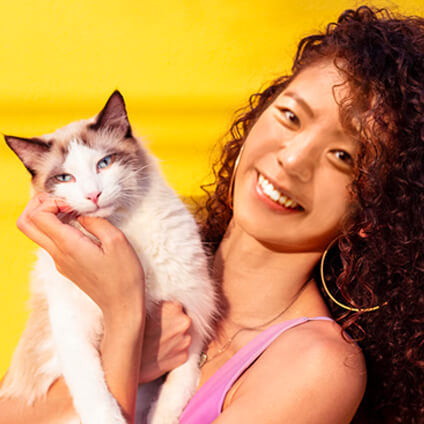
With over five years of specialized experience as an animal writer, my expertise lies in cat nutrition, health, behavior, grooming, and training. I am dedicated to delivering helpful and informative content that caters to the well-being of our feline friends. My primary goal is to empower pet owners with knowledge and ensure our feline companions thrive in health and happiness. In my free time, I love volunteering at local cat rescue centers.
